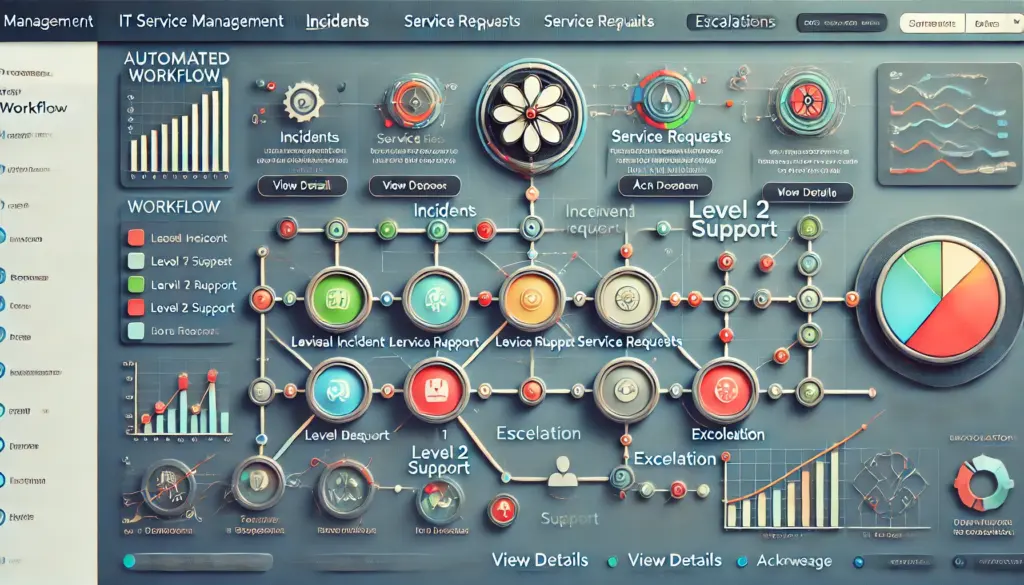How to Document Incidents for Better Analysis and Reporting
📝 Introduction
Document Incidents: Incident documentation is a critical aspect of IT service management that ensures issues are recorded, analyzed, and prevented from recurring. A well-documented incident report helps IT teams improve response times, conduct root cause analysis (RCA), enhance collaboration, and maintain compliance with industry standards.
Poor documentation can lead to repeated incidents, miscommunication between teams, and inefficient troubleshooting. In this guide, we will cover the best practices for documenting IT incidents, including the essential elements of an incident report, tools for documentation, and strategies for making reports more effective.

📖 Why Incident Documentation is Crucial
Incident documentation plays a fundamental role in IT operations, helping organizations:
✅ Enhance Troubleshooting: Detailed reports make it easier to resolve similar incidents in the future.
📊 Provide Data for Root Cause Analysis (RCA): Understanding recurring patterns helps prevent future disruptions.
🔄 Ensure Compliance and Accountability: Many industries require thorough incident reporting for regulatory and security audits.
🚀 Improve Communication Between Teams: Proper documentation helps different teams understand the impact and resolution of an incident.
📂 Build a Knowledge Base: A repository of well-documented incidents serves as a learning resource for IT teams.
🛠 Key Components of an Effective Incident Report
A well-structured incident report ensures that no critical details are missed. Here are the essential elements that every incident report should contain:
📍 Incident Summary: A high-level overview of what happened, how it was detected, and its impact.
📅 Date and Time: Precise timestamps of when the incident started, when it was detected, and when it was resolved.
👥 Affected Systems and Users: A list of impacted servers, applications, and end-users.
🔍 Incident Description: A detailed breakdown of the issue, including any error messages, logs, or symptoms.
⚡ Immediate Actions Taken: Steps taken to contain, mitigate, or temporarily fix the issue.
🛠 Resolution Steps: A step-by-step explanation of how the incident was resolved.
📌 Root Cause Analysis (RCA): The underlying cause of the incident, why it happened, and preventive measures.
📁 Supporting Evidence: Attachments such as screenshots, log files, and monitoring alerts that provide additional context.
🏆 Best Practices for Documenting Incidents
🕒 1. Log Incidents Immediately
- Document the incident as soon as it occurs to ensure accuracy.
- Delayed reporting can lead to missing or incorrect details, making RCA difficult.
📜 2. Use a Standardized Template
- Establish a structured format for consistency.
- Ensure every report includes critical details like impact assessment, root cause, and resolution.
🎯 3. Write Clear and Concise Reports
- Avoid technical jargon where possible.
- Ensure that the report is understandable by all stakeholders, including management and non-technical teams.
🖼 4. Attach Screenshots and Logs
- Add supporting evidence such as logs, monitoring graphs, and screenshots.
- This helps in diagnosing and preventing future incidents.
🔍 5. Ensure Accuracy and Objectivity
- Document facts, not assumptions or opinions.
- Verify the details before finalizing the report.
🔄 6. Review and Validate Reports
- Have another team member review the report for completeness and clarity.
- Update documentation with any new findings post-resolution.
🛠 Tools for Incident Documentation
Many IT teams use specialized tools to document incidents efficiently. Here are some of the most commonly used platforms:
📌 Freshdesk & ServiceNow – IT service management tools for tracking incidents and managing resolution workflows.
📌 JIRA & Confluence – Used for tracking IT issues and creating detailed documentation.
📌 New Relic & Grafana – Monitoring tools that log system metrics and help in visualizing incidents.
📌 Notion & Google Docs – Useful for collaborative documentation and knowledge base creation.
🚀 Conclusion
Incident documentation is not just a routine process; it is a strategic tool that helps IT teams improve resolution times, maintain compliance, and build a valuable knowledge base. By following a structured approach, ensuring reports are clear and factual, and using the right tools, organizations can enhance their incident response capabilities and prevent recurring issues.
🚀Learn More:
📌 Have you ever encountered challenges in incident reporting? Share your thoughts and experiences in the comments below!




